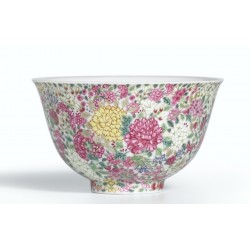Tang Kuei and Peony Formula (Dang Gui Shao Yao San)
Tang Kuei and Peony Formula (Dang Gui Shao Yao San) tis the one herb formula that has been recommended for use during pregnancy, expressly derived for avoiding miscarriage and as daily preventative therapy for the growing fetus. The composition nourishes blood, tonifies blood and qi, soothing the liver, strengthening the spleen and promoting water metabolism.
Zhang Zhong-Jing first formulated Tang Kuei and Peony Formula (Dang Gui Shao Yao San) to treat abdominal pain during pregnancy due to a disharmony between the liver and spleen. The root of this disharmony is a deficiency of blood in the liver. During pregnancy, the liver supplies extra blood to the uterus, which is necessary to maintain the fetus, andsince the liver blood “carries” the liver qi, if the expecting mother is blood deficient, or unable to sustain the increased production of blood, the liver will become stuck and hyperactive. The hyperactive liver invades the spleen (a Wood excess “overwhelms” Earth), damaging the spleen’s ability to perform its transportation and transformation function. This is how Zhang Zhong-Jing understood the development of the pattern. The accompanying signs and symp- toms of Zhang Zhong-Jing’s original pattern included hypertonic abdomen with pain, fluid retention, especially edema of the lower limbs, and, of course, the chief symptom of persistent mild abdominal pain.
The chief ingredient, white peony root (bai shao), addresses all the major aspects of the un- derlying pathology. Its primary action is to supplement blood. Although it does not directly address the dampness component of the pattern, bai shao so effectively softens the liver and nourishes the blood that it could be taken by itself to prevent the pattern from developing in the first place.
The two deputies serve different functions in Tang Kuei and Peony Formula (Dang Gui Shao Yao San). Ligusticum (chuan xiong) might have been considered the chief had Zhang misunderstood the pattern he was seeing with pregnant women suffering from abdominal pain. Chuan xiong enters the blood of the liver and chong vessels (as well as the collaterals) and proceeds to “move the qi in the blood” in order to alleviate pain. Asian water plantain (ze xie) strongly addresses the water accumulation aspect of the pattern by promoting urination and leaching out dampness. It indirectly opens collaterals by removing water accumulation.
Two of the three assistants, atractylodes (bai zhu) and poria (fu ling), together can rescue the spleen from damp encumbrance and protect it from the liver’s assault. These substances are often combined to boost spleen qi and resolve dampness. In addition, Zhang frequently combined atractylodes (bai zhu) with peony (bai shao) to treat liver-spleen disharmony. Thebai zhu strengthens the spleen while the bai shao soothes the liver. The third assistant, tang kuei (dang gui) joins the chief to help nourish the blood, but it is also the substance in the formula that is in control of blood invigoration.
For reference: Chinese Herbs & Pregnancy: Where to Draw the Line by by Subhuti Dharmananda, Ph.D., Director, Institute for Traditional Medicine, Portland, Oregon, http://www.itmonline.org/arts/pregherb.htm
Ingredients: 川芎 Sichuan lovage root, cnidium, chuanxiong root Rhizoma Ligustici Chuanxiong; 當歸 tangkuei, Chinese angelica root Radix Angelicae Sinensis; 白芍 white peony root, peony Paeoniae Radix alba; 白术 , bai shu ovate atractylodes, (white) atractylodes rhizome; 茯苓 sclerotium of tuckahoe, China root, hoelen, Indian bread Poria Cocos; 澤瀉 alisma rhizome, water plantain Rhizoma Alismatis Orientalis
- In Stock
-
$17.00

